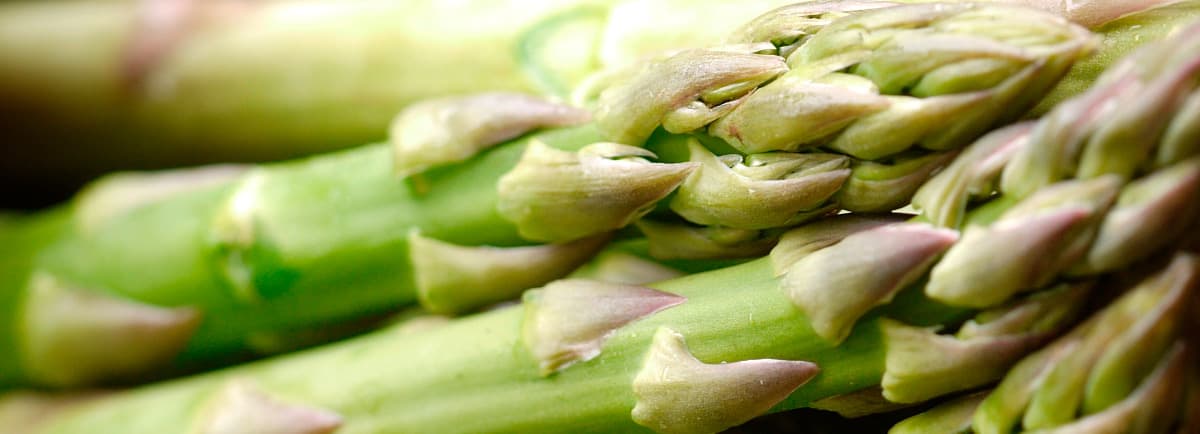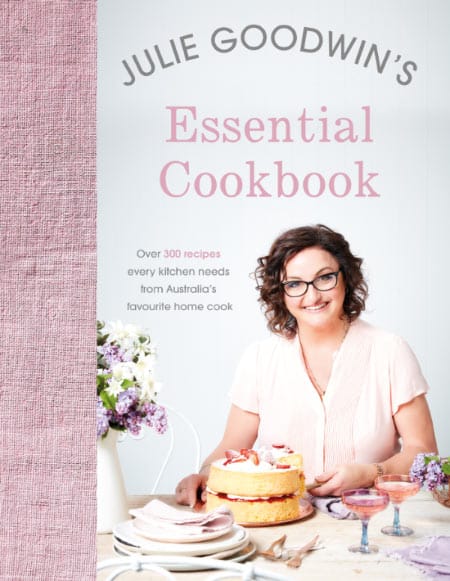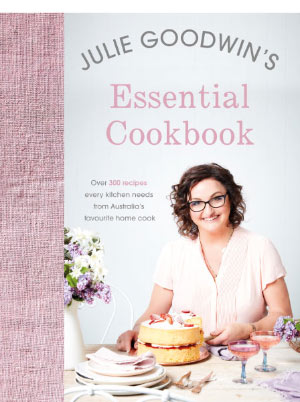
I was just down at the shops waiting for a script to be filled (after my horrid dentist visit, but that’s another story to be told another time) and I wandered into Coles to see if I could pick up some asparagus. I always look forward to spring time, as I adore asparagus, especially when it is young and tender and fresh.
Technically, the asparagus season has just started as it’s now spring, but it does sometimes start to come in a little earlier. My hopes were high.
So, imagine my surprise to see a sign on the asparagus in Coles informing me that the asparagus season is over. And then, I was urged to enjoy “fresh” asparagus from Peru.
It’s wrong on so many levels. Well, three, anyway.
Firstly, the sheer factual incorrectness of it. It’s misinformation like this that keeps consumers in the dark and really scuttles our efforts to learn about seasonality. Mr. Coles, the asparagus season is not over. As the Carpenters would say, we’ve only just begun.
And secondly, Peru? Seriously. Imagine the resources that have gone into transporting those little bunches from South America all the way to Australia. Australia, where we grow the most beautiful and diverse produce.
Third problem – have a LOOK at this asparagus they have freighted in from Peru. It looks like trees from some weird Peruvian forest. If you snapped the woody bits off this asparagus, you’d have nothing left. It is a drab, dull green, it is dried out, pockmarked and cracked. It is, frankly, disgusting.
I was not happy. (Can you tell by my tone yet? I am aiming for a bit of a cranky tone here.)
So, I went around to the local fruit shop, who source fruit and veg from 5 different local farmers. And they had asparagus from…Peru!! I asked why. Apparently the inclement winter has delayed the asparagus season a little. So if they want to offer asparagus, they have to import it.
My concern is that we have become so used to having things available to us all year round, that we are losing our knowledge of when things are in season and at their best. And it is creating a demand for imported produce.
Please, please don’t buy asparagus from Peru. Please let’s band together and send a message to the sellers that we can wait for our beautiful, fresh Australian asparagus. Let’s enjoy foods as they are meant to be – fresh, seasonal, local. It’s better for our taste buds, our health, our farmers, our economy and our planet.
Rant over, but watch this space in summer when the supermarkets will be flogging oranges from the USA!
***Oh, and a disclaimer – I didn’t check out Woolies or any other supermarkets, they may have horrible Peruvian asparagus too, or they may not, it’s just that Coles was the supermarket I happened to be in!
For more details about this issue see: • www.oxfam.org.au/grow






Well done for pointing this out Julie..Much appreciated
Thanks for pointing this out, Julie. I would have been one of the consumers who read the sign and believed it. How shameful that they try to keep their customers in the dark like that.
Laura, that’s made my day. If we all read the labels and try to buy where we live, that’s a big step forward in my book.
While I object to the misinformation and the poor quality at Coles, I don’t really have a problem with importing food – after all, we import things from all over the country and that adds wonderfully to the diversity available in our diets. To me, it’s kind of like the old joke variously attributed to Shaw, Churchill, Groucho, or Twain.
Madam, would you sleep with me for a million pounds?
My goodness, Well, I’d certainly think about it
Would you sleep with me for a pound?
Certainly not! What kind of woman do you think I am?!
Madam, we’ve already established that. Now we are haggling about the price.
Something I do find funny, though, is how often organic produce is imported. To me, this is counter-intuitive since part of the point is to lessen the strain on the earth. I have a small wholefood shop and I sell, amongst other things, organic split peas. These split peas come to us from Canada, which is great for the Canadian farmers, I suppose, but, given the shipping distances, somewhat problematic from an environmental POV. Australian split peas are available, and at a third the price, but they’re not organic and I’ve found that it’s the organics that sell …
Hi Lee-Gwen, thanks so much for your comments. It’s a complex issue isn’t it, organic vs not, imported vs local, and all the other variables. I am hoping that we can embrace seasonality rather than broad availability. I am hoping that we can be informed rather than uninformed. i don’t pretend for a second that I hold the answers to the world’s problems, but I will fight for the solutions I do see and the things that make sense to me.
I believe that open and frank debate is absolutely the way forward. With all the brains (and hearts, and souls) on this planet, we should be able to work it out together.
I advocate buying locally rather than importing because I believe there is a direct and causal effect between global warming and the suffering of people in certain third world countries.
I really applaud you for you efforts in promoting organice produce, but even more imporant (to me) is your thought process and willingness to enter into the discussion. Great talking to you!
I have this discussion quite a bit with my customers. I like to challenge their preconceptions! So often, the view is that organic is “best” environmentally but I find that this isn’t always the case. When split peas are coming from Canada, that puts a huge strain on the planet, IMO.
Of course, the flip side is about helping poor farmers in other countries. We grow quinoa in Australia now but we choose to buy Fair Trade quinoa from Peru (or Bolivia, I can’t remember right now) because this will so dramatically help the people who grow it. There can also be a question about whether some things SHOULD be grown in Australia. Rice, for example. Australia is a very arid land and I often feel uncomfortable about Australian rice for that very reason. One of my suppliers now has a bio-dynamic rain fed (I love saying that because people mishear and think I said “grain fed” leading to some peculiar looks!) medium grain brown rice and I love knowing that it has not been irrigated or flood farmed.
We basically have a “tree” model in terms of what comes into the shop. Across the top, and of equal importance where possible, we have Price (affordable), Packaging (minimal and appropriate – we sell a lot of loose stuff), and Quality (must be good!) Under these, forming the “trunk”, we have Australian Grown, Fair Trade, Organic. There’s a lot of room for swapping of these things but it’s the preferred importance.
I admit that one of the things I like about the modern world is that we can have pretty much anything at any time of year but so often, as you’ve commented here, the quality too often fails when things are being stored and shipped and when they’re being grown with that in mind.
Given your interest in seasonal eating, incidentally, you might enjoy the book Ripe Enough by Cherry Ripe.
‘In this frequently engaging collection of articles Ripe discusses many aspects of food, opening with an exploration of ripeness and why so many of us not only availed only of unripe, early picked and poorly stored fruit but are also unable to recognise good fruit.’
It’s dated, a bit (if anything, things seem to have got worse!) given that it was published in 1999 but it’s still a thought-provoking read … and she gives recipes!
Um … sorry about this … I seem to have got carried away a bit. I’m sure you’d understand this but food is a bit of a passion!
Lee-Gwen
http://thebookish.blogspot.com/2009/08/ripe-enough-cherry-ripe.html
Thanks Di.
Hi Julie….
Welcome to my protest world! I have been refusing to buy from any supermarket anything that is supposed to be fresh and imported for the few years. Seriously, have a look at the quality of what they are selling… I’ve discovered our local fruit shop has wonderful Tasmanian garlic, and for around the same price as the Chinese imports.. shop local and support our farmers.
It’s a given that we as a country have to trade with the world for some things, but surely not our fresh food!!
BTW …. Go the Tigers (I love your tweets to the boys!)
Annette
I agree Annette, and good on you for votingwith your feet. If enough of us do it the message will get through. And go the Tigers!
If you’ve read this far you might be interested in our website all about asparagus http://www.asparaus-lover.com.
I haven’t quite formed my opinion yet on the whole peruvian asparagus issue so this is interesting reading. My initial reaction when we started getting peruvian imports was “how ridiculous” then there was quality, which varies, but will never be like local produce and then I googled peruvian asparagus and saw all the articles on the irrigation of asparagus and water shortages. That took me to not wanting to buy the imported produce. But then…. I read about why the asparagus industry developed in Peru which seems to have been about providing an alternative ecomony to growing drugs and exporting them…
Life and decisison are never simple. When I have learned a little more I will share my thoughts on our website. Until then we still have to wait until April / May for fresh asparagus here in the UK!!
Sue